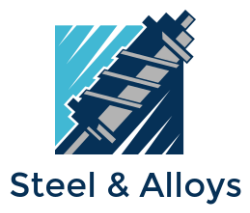Cold Work Tool Steels
*Introduction to Cold Work Tool Steels:*
Cold Work Tool Steels are a group of materials specifically designed for applications that involve shaping or forming of metals at lower temperatures, making them ideal for various cutting, shearing, and punching tools. These steels possess excellent wear resistance, high hardness, and good toughness, which makes them well-suited for demanding industrial applications.
*Types of Cold Work Tool Steels:*
1. **HCHCr (High Carbon High Chromium) Steels:**
- **D-2:** D-2 is a popular high-carbon, high-chromium steel offering exceptional wear resistance and excellent toughness. It is often used for forming and cutting tools, punches, and dies.
- **D-3:** D-3 is another high-carbon, high-chromium steel that provides good wear resistance and high hardness retention. It finds applications in forming rolls and dies.
- **D-6:** D-6 is a high-carbon, high-chromium steel with better wear resistance and toughness compared to D-2 and D-3. It is commonly used for cold stamping and cutting tools.
2. **OHNS (Oil Hardening Non-Shrinking) Steels:**
- **O-1:** O-1 is a widely used oil-hardening steel, known for its good machinability, excellent wear resistance, and toughness. It is commonly employed for gauges, dies, and cutting tools.
- **O-2:** O-2 is a tougher version of O-1 steel, offering better wear resistance and dimensional stability. It is often used for blanking and forming dies.
- **O-6:** O-6 is an oil-hardening steel with high hardenability and wear resistance. It is suitable for applications that require high compression strength and toughness.
3. **Shock-Resisting Steels:**
- **S-1:** S-1 is a shock-resisting steel with high toughness and impact resistance. It is commonly used for hammer dies and chisels.
- **S-2:** S-2 is a versatile shock-resisting steel with improved wear resistance and toughness. It is used for applications involving heavy-duty punching and shearing.
- **S-3:** S-3 is a shock-resisting steel with high strength and toughness. It is suitable for applications where extreme impact resistance is required.
*Shapes, Sections, and Forms of Cold Work Tool Steels:*
Cold Work Tool Steels are available in various shapes, sections, and forms to cater to different application requirements:
1. **Shapes:**
- *Rounds:* Round bars are commonly used for manufacturing cutting tools and punches. Sizes typically range from 10mm to 300mm in diameter.
- *Squares:* Square bars find application in making punches and dies. Sizes generally range from 10mm to 200mm.
- *Flats:* Flat bars are used for creating shearing blades and knives. They are available in widths ranging from 20mm to 300mm and thicknesses from 5mm to 50mm.
2. **Sections:**
- *Rolled:* Cold Work Tool Steels in rolled sections are hot-rolled and then further processed to achieve the required dimensions. Rolled sections are readily available and cost-effective.
- *Forged:* Forged sections offer superior strength and enhanced mechanical properties. These are obtained by subjecting the steel to forging processes.
- *Bright:* Bright sections undergo additional finishing processes to attain a smooth and polished surface, making them suitable for precision tools and components.
3. **Forms and Machinable Conditions:**
- *As Rolled:* As-rolled steels are in the annealed condition and are suitable for further processing such as machining, forging, or heat treatment.
- *Annealed:* Annealing is a heat treatment process that improves machinability and reduces hardness, making the steel easier to machine.
- *Normalized:* Normalizing is a heat treatment process that imparts uniformity in grain structure and reduces internal stresses, enhancing the mechanical properties.
- *Spheroidize Annealed:* Spheroidize annealing is a process to obtain a fine and spherical carbide microstructure, enhancing toughness and machinability.
*Production Routes:*
Cold Work Tool Steels are manufactured using different production routes, which can impact their properties:
1. *Non-Vacuum Degassed Route:* This traditional route involves the use of conventional melting and refining methods, resulting in steels suitable for general applications.
2. *Vacuum Degassed Route:* Vacuum degassing ensures higher purity and reduced impurities, resulting in superior quality steels suitable for critical applications.
*Conclusion:*
Cold Work Tool Steels offer a diverse range of materials with varying properties, shapes, and forms to meet the demands of modern industrial applications. Carefully choosing the right type, section, and form of steel ensures optimal performance and tool longevity in different machining and forming operations. Whether you require high wear resistance, toughness, or impact resistance, there's a Cold Work Tool Steel that fits your needs. Always consider the specific application requirements and consult with experts to make the best choice for your tools and components.
